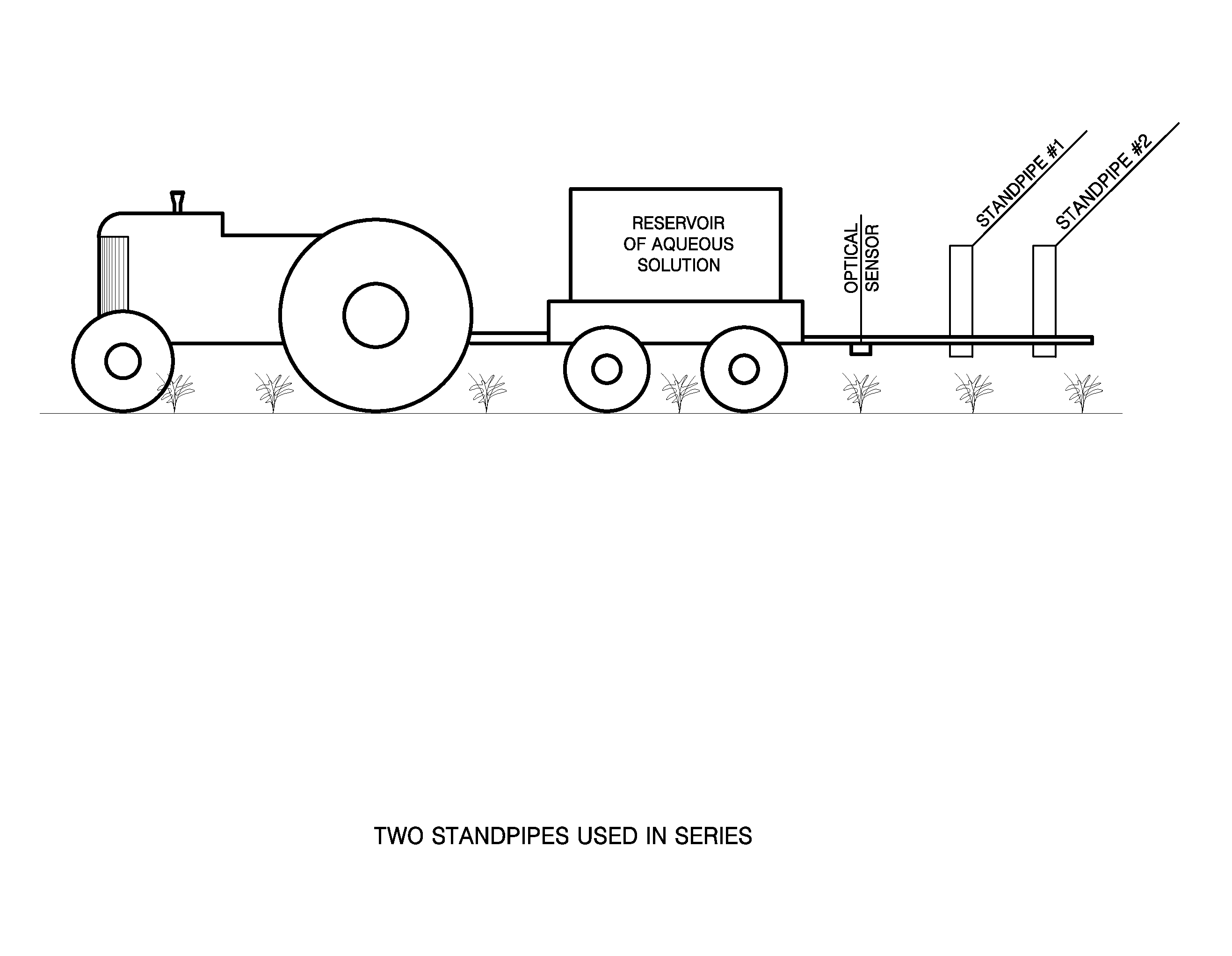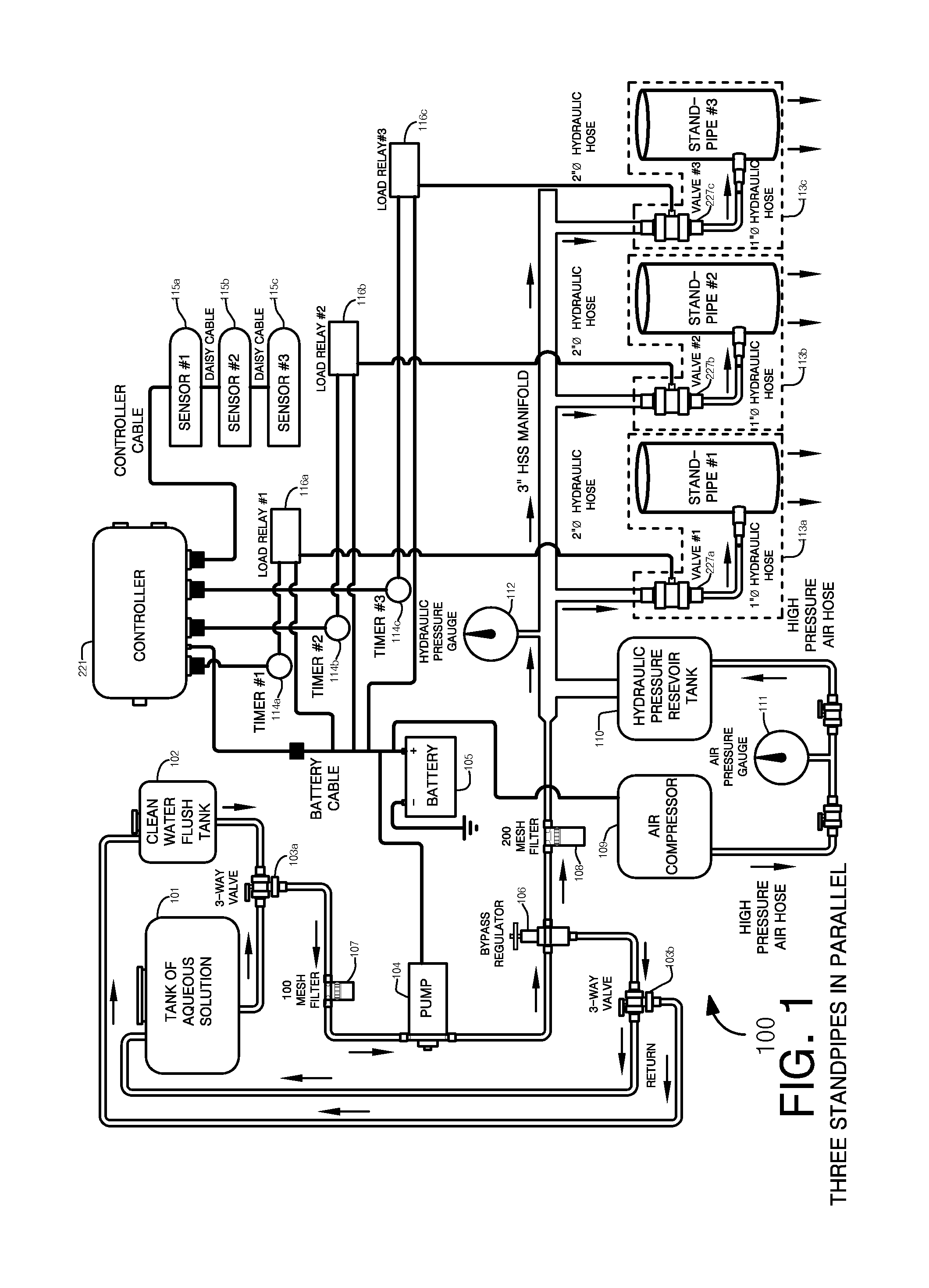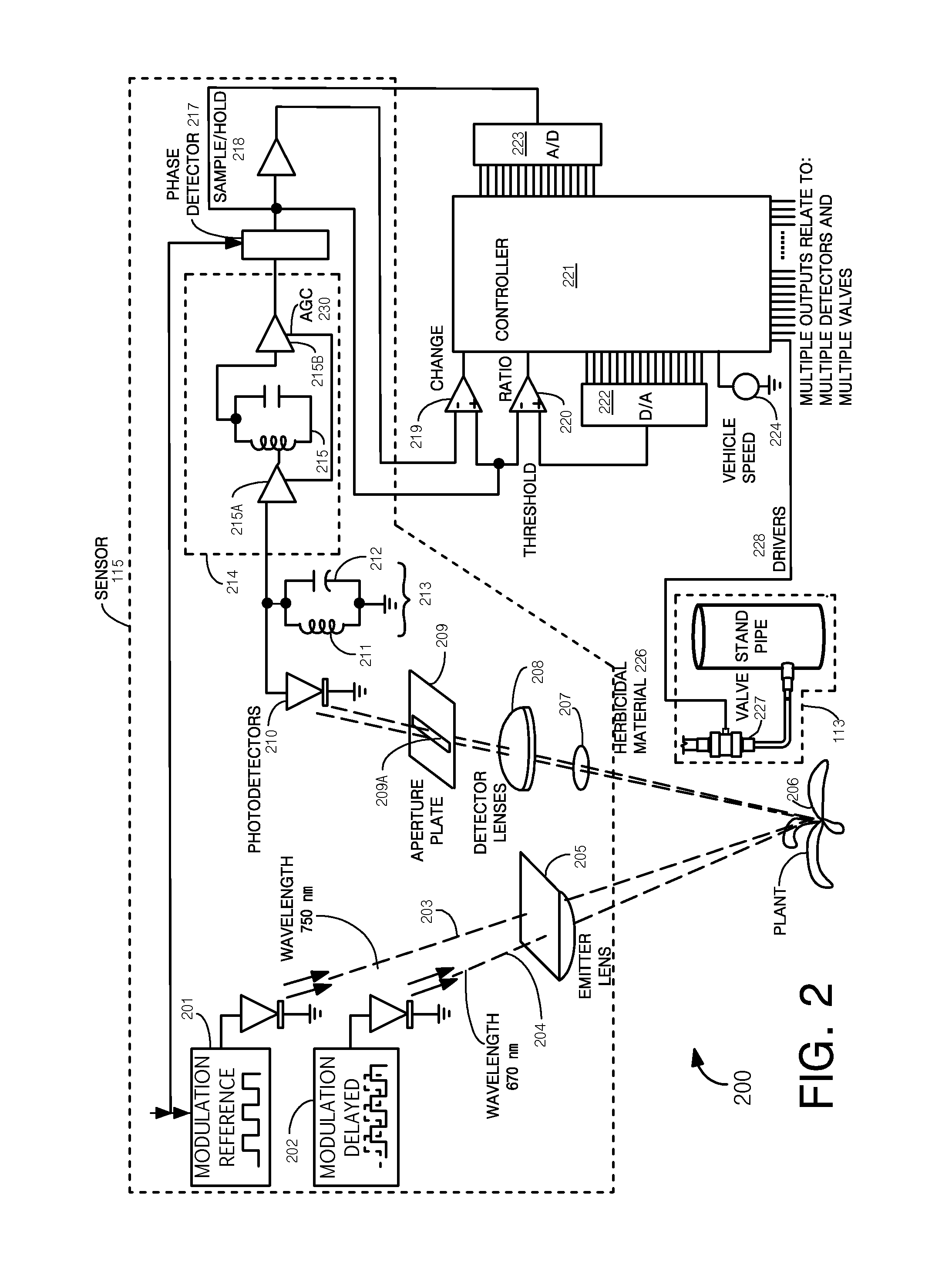Apparatus and method for localized irrigation and application of fertilizers, herbicides, or pesticides to row crops
a technology of applicator and irrigation method, applied in the field of agricultural equipment, can solve the problems of unsatisfactory results of speeding up the process by utilizing faster tractor speed and employing electronically controlled irrigation valves, unavoidable damage to plants and topsoil, and use of automated irrigation technology, so as to reduce the hydrostatic pressure and velocity of the aqueous solution
- Summary
- Abstract
- Description
- Claims
- Application Information
AI Technical Summary
Benefits of technology
Problems solved by technology
Method used
Image
Examples
Embodiment Construction
[0089]The present method of delivery of solution to row crops accommodates the need for greater tractor speed, predetermined aqueous solution volumes, low flow velocities of effluent delivered to individual plants, localization of the deposition, and rapid cycle times. The invention is directed to an apparatus and a method for selectively providing delicate nascent plants with a predetermined volume of aqueous solution. In one embodiment, the hydraulic apparatus, together with certain electronic controls, delivers aliquots of aqueous solution rapidly, yet under low pressure, thereby ensuring that delicate nascent plants are not damaged by high-pressure flows and also ensuring that bare soil is not subject to erosion. The on / off control of the hydraulic apparatus is provided by means of light emitters described herein. The streaming of the aliquots along the approximate center is still effective in the present invention, while a variation of approximately 10% from true center achieve...
PUM
| Property | Measurement | Unit |
|---|---|---|
| muzzle velocity | aaaaa | aaaaa |
| wavelength | aaaaa | aaaaa |
| wavelength | aaaaa | aaaaa |
Abstract
Description
Claims
Application Information
 Login to View More
Login to View More - R&D
- Intellectual Property
- Life Sciences
- Materials
- Tech Scout
- Unparalleled Data Quality
- Higher Quality Content
- 60% Fewer Hallucinations
Browse by: Latest US Patents, China's latest patents, Technical Efficacy Thesaurus, Application Domain, Technology Topic, Popular Technical Reports.
© 2025 PatSnap. All rights reserved.Legal|Privacy policy|Modern Slavery Act Transparency Statement|Sitemap|About US| Contact US: help@patsnap.com



